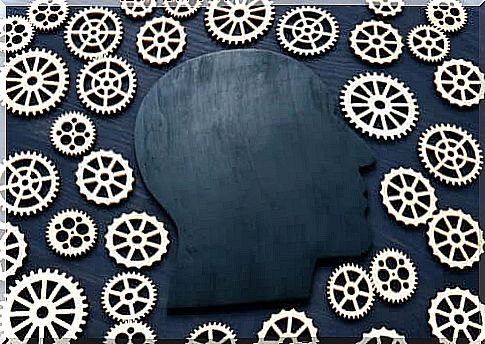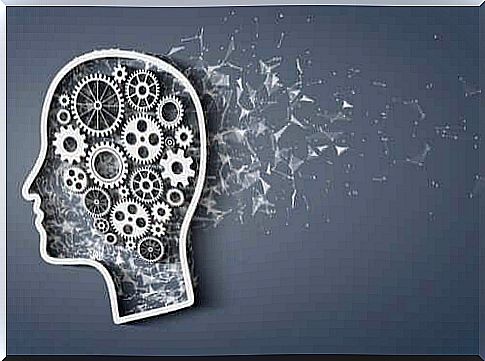The Intelligence Quotient: Characteristics And Evolution

Intelligence quotient (IQ) is a quantitative or statistical representation of an individual’s score on a standardized intelligence test.
The IQ score has been widely used to compare an individual’s intellectual ability with the average score obtained by a sample of “similar” people, usually of the same age group.
So, for example, it is possible to argue that a person’s intelligence, as reflected in an IQ test score, is higher (or lower) than average or typical scores of peers (1) .
The basics of intelligence quotient (IQ)
In 1884, researcher Francis Galton evaluated a large number of people with the aim of developing an intelligence test. For this evaluation, he tried to measure different characteristics: the size of their head or their reaction time are some examples (1).
Through his research, Galton introduced methods of numerically classifying physical, physiological and mental attributes. This is how the researcher proposed that one could describe a large set of measures of human traits in a meaningful way using two numbers.
- First, the mean value of the distribution (the mean)
- Second, the dispersion of the scores around this mean value (the standard deviation) (1)
Another figure we can place in attempts to measure IQ is Charles Spearman. This English psychologist introduced the idea that all aspects of intelligence are related to each other. This point of view is very important: it laid the foundation for the expression of the intelligence quotient compound (1).

The first intelligence tests and the introduction of the IQ score
The modern era of intelligence testing began just after the turn of the century. Alfred Binet and Theodore Simon were responsible for developing a method to identify substantial differences in intelligence in children.
The idea was to differentiate those who considered themselves intellectually capable of benefiting from education from those who had intellectual problems and should receive special education programs (1).
The methodology was to express a child’s performance as a quotient between the score obtained and the age at which the average child could reach the same score. It was the publication of Binet’s Enlarged Scale of 1908 and the work of Stern, the German psychologist, that gave way to the concept of mental age (SEP).
Mental age and IQ
An MS of 8 means that the child, regardless of actual age, performed as well as an average 8-year-old child in a particular task. This ultimately led to the creation of the IQ score to represent a proportion of MS divided by their chronological age (CE). This relationship has been put into a metric. Thus, one divided the mental age by its chronological age, to multiply it by 100. Which produced an intelligence quotient or IQ score.
Around 1910, Henry Goddard, principal of a New Jersey school for people with mental retardation, pioneered the concept of IQ testing in the United States. However, the first time that IQ scores were part of an intelligence test in the United States was in 1916. On that date, Lewis Terman translated the Binet-Simon test, giving way to that of Stanford-Binet.
During World War I, the US military developed the Army’s Alpha and Beta tests. The purpose of these tests was to assign the positions of the soldiers according to their intellectual capacities. Also exclude those considered intellectually unsuitable for military service.
During this time, David Wechsler was appointed military psychologist. Thus, he performed psychological tests on individuals who had failed the Army Performance Scale (3).

Wechsler tests and intelligence quotient score
In 1932, Wechsler was appointed chief psychologist at Bellevue Psychiatric Hospital (New York). From this point on, a change in the IQ score begins to occur.
As a result, the significance of the IQ score was changed to a standard score. This standard score referred to the average score obtained by a sample of healthy age couples (3). This new concept makes it possible to use the intelligence quotient throughout life (4).
Wechsler-Bellevue Form 1 was released in 1939. It was a measure of intelligence based on the synthesis of scores from several subtests. In addition to a composite summary, called Full Scale IQ , Wechsler argued that intelligence can be measured more accurately. This could be done by dividing the subtests. But how ?
The subtests would be split in half. First, those that primarily reflect verbal skills. Second, those that reflect nonverbal intelligence or “performance” skills . Thus, a verbal IQ score and an IQ performance score were given.
Wechsler’s tests and recommendations for describing intelligence were successful. Subsequently, he developed a test for adults, the WAIS (Wechsler 1955). This is a direct derivation of the Wechsler-Bellevue test as well as the children’s version (WISC) published in 1949.
Currently, these tests are frequently used to measure intelligence in a manner similar to how a counter would be used to measure the length of a table.
However, we can ask ourselves: does an IQ score really and accurately represent someone’s intelligence? It seems that, little by little, the concept of IQ and intelligence are evolving, and with that, the ways of evaluating it must also evolve.










